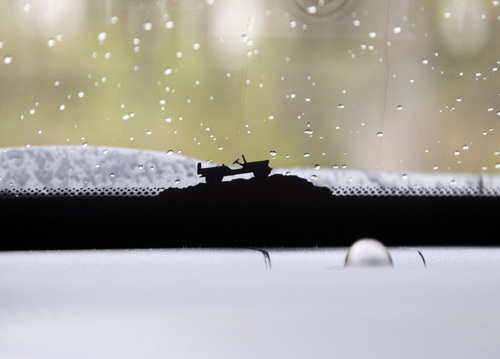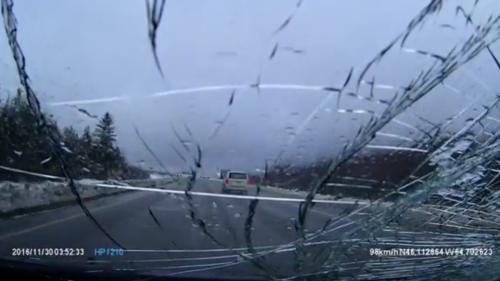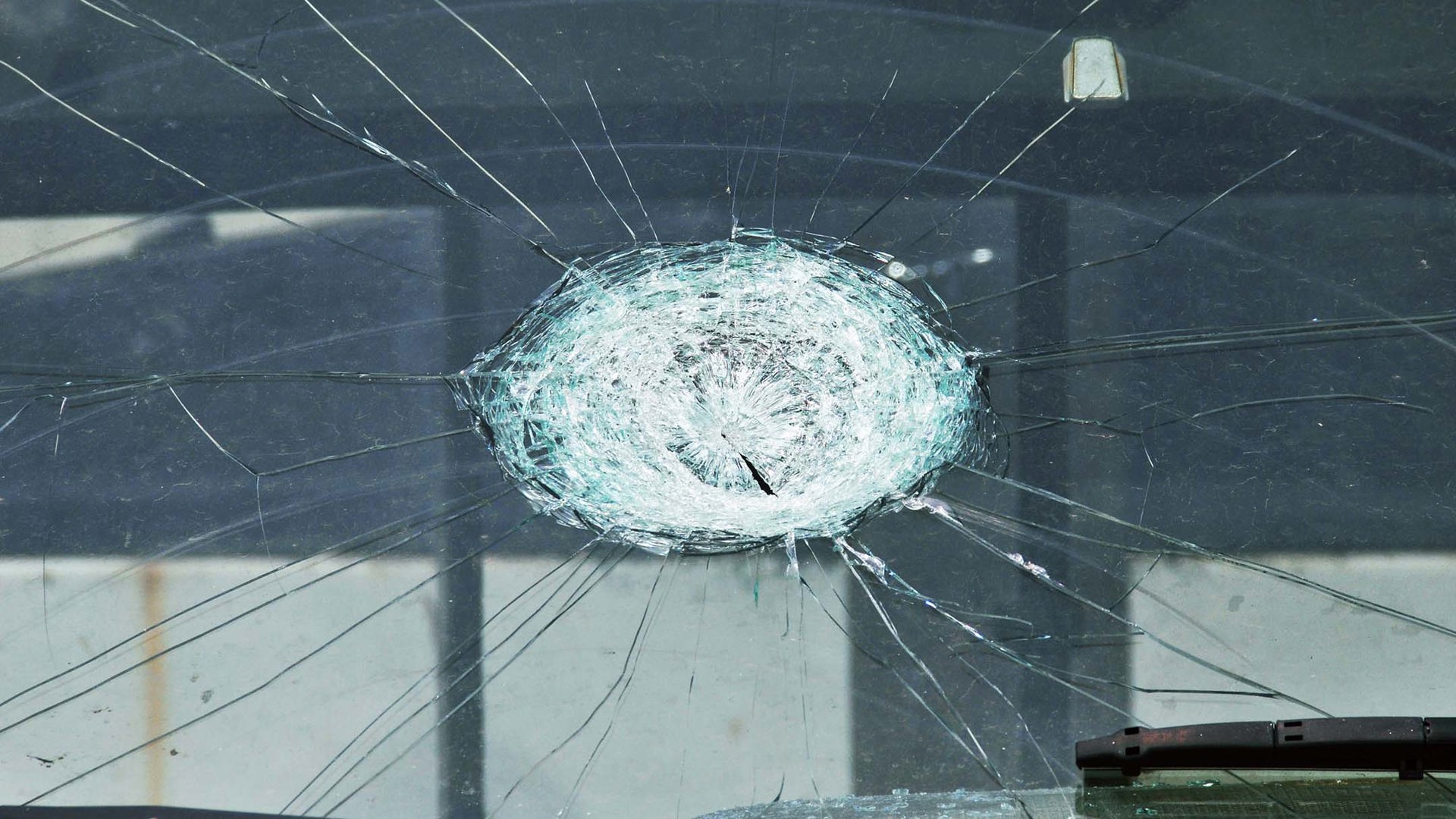You’re driving along, minding your own, and suddenly it happens: a truck tosses up a stone, and now you have a crack in your windshield. It’s an aggravation and it could be a safety issue, and you need to know what to do next.
What you can do, and how soon you should, depends on a few factors. Remember what we’re giving here is a guide. If you’re not sure about your windshield, call your insurance company or visit a reputable glass repair shop.
While chips and cracks can obstruct your vision, they can also be dangerous because the windshield is an essential component of your vehicle’s structural integrity. It contributes about 45 percent of protection in a crash, which jumps to 60 percent in a rollover. You don’t want to be messing around with those kinds of numbers.
And if you don’t fix them, they’re likely to get worse. Road bumps, door slams, and temperature extremes can cause cracks and chips to get longer and larger. A chip that might have been repairable at the beginning could grow into one that requires a complete windshield replacement.
Getting to know your windshield

Your windshield is laminated glass, a “sandwich” of two glass sheets bonded with a vinyl layer in between. If the glass breaks, the vinyl holds it together. This helps to prevent objects and people from flying through it in a crash. Most side and rear windows are made of tempered glass, made by heating and then rapidly cooling the glass during production. It shatters into tiny crumbs when it’s broken, and that’s a good thing if that’s the only way out in a quick-is-everything situation, such as a fire.
Still, laminated glass can only do so much, and the last thing you want is a cracked windshield compromising your safety. There are names for different types of chips, including:
- star, a chip with small cracks radiating in a star-shaped pattern;
- bull’s-eye, a round indentation of tiny cracks;
- half-moon, a not-quite-complete bull’s-eye;
- combination, a bull’s-eye with radiating star cracks.
All cracks and chips should be repaired, but how soon can depend on where they are and how big they are – and if they’re big enough or in the wrong place, you could also be eligible for a ticket if the cops spy you trying to peer around them.
As a general rule, the windshield overall shouldn’t have any cracks more than 20 cm long. The “critical area” is the part of the windshield cleared by a swipe of the wiper blade on the driver’s side. This shouldn’t have any large cracks, any stars larger than 5 cm across, or two or more stars that are 4 cm or larger.
The “acute area” is within the critical area and directly in the driver’s vision when looking forward. This shouldn’t have any cracks at all, and no more than two stars, bull’s-eyes, or half-moons that are more than 1 cm in diameter. If your windshield has issues in the acute or critical areas, or if there are large cracks (especially if they extend across the glass or touch the edge of the windshield), it’s time to visit a shop, where the experts can determine if a repair is enough or if you require a replacement.
Glass shop or DIY?

Most stone chip repairs are done by cleaning up the area, vacuuming out the air in the hole, squirting in a special resin, and curing it. In the hands of an expert, it usually takes less than half an hour. As good as these repairs can be, they won’t be exactly as clear as the rest of the glass, and a windshield with too many filled-in stars or cracks may have to be replaced.
Many glass shops offer mobile service, which makes repairs even more convenient. Sometimes, though, you’ll find little pop-up services in parking lots to provide on-the-spot fixes. Use your smarts, as they may not perform the highest-quality repairs, or be around next week if you have a problem and need to follow up with them. And while we’re definitely not saying every one of these guys is a crook, auto insurance fraud is a huge issue in Canada. Crime rings have been known to take down insurance information for these parking lot repairs and then use it to submit false claims against your policy. We suggest giving your information only to a company you trust.
There are also do-it-yourself kits available at parts stores. We’re neither condemning nor recommending them, because there are as many happy customers as those who wished they’d never tried to handle it on their own. What we will say is this:
- Read the instructions all the way through before you begin, and then follow them exactly;
- Search out any step-by-step videos;
- Make sure the windshield is completely dry before you start;
- Remove any broken glass in the chip before adding resin;
- Don’t repair it in direct sunlight (although you may have to move it to a sunny spot during the curing process) or when the glass is hot;
- Be careful not to get any resin on your paint;
- If the kit uses a syringe to vacuum air and then inject resin, try a couple of “dry runs” to practice so you know how the syringe works – some of them are complicated.
As with anything else, prevention is always better than the cure. You can’t always predict when a stone will come your way, but keep your distance from gravel and cement trucks on the highway. If you get a chip, have it assessed sooner rather than later so it doesn’t grow in the meantime. And always err on the side of caution. It’s not just a windshield, it’s also a crash shield, and it’s an essential part of your vehicle’s safety.

